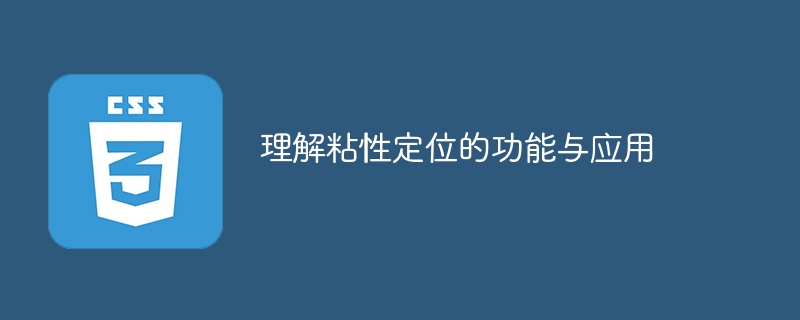

Sticky positioning is a technique commonly used in web design, which allows web elements to remain in a fixed position on the page and will not change even when the user scrolls the page. Sticky positioning is highly functional and practical, and plays an important role in web design and user experience. This article explores the capabilities and applications of sticky positioning.
1. Function
2. Application
Summary:
As a common web design technology, sticky positioning has important functionality and a wide range of application scenarios. It can make web design more flexible and user-friendly, improving user experience and website effectiveness. However, when using sticky positioning, you should also note that excessive use may affect the normal scrolling and loading speed of the page. User experience and performance optimization need to be considered comprehensively on the basis of ensuring functionality and practicality.
The above is the detailed content of In-depth understanding of the applications and functions of sticky positioning. For more information, please follow other related articles on the PHP Chinese website!
 What is user stickiness
What is user stickiness
 How to locate someone else's cell phone location
How to locate someone else's cell phone location
 How to implement line break in alert
How to implement line break in alert
 How to set up domain name redirection
How to set up domain name redirection
 How long does it take for Douyin recharge to arrive?
How long does it take for Douyin recharge to arrive?
 The difference between master and host
The difference between master and host
 git undo submitted commit
git undo submitted commit
 How to turn off ics network sharing
How to turn off ics network sharing
 vue references js files
vue references js files




